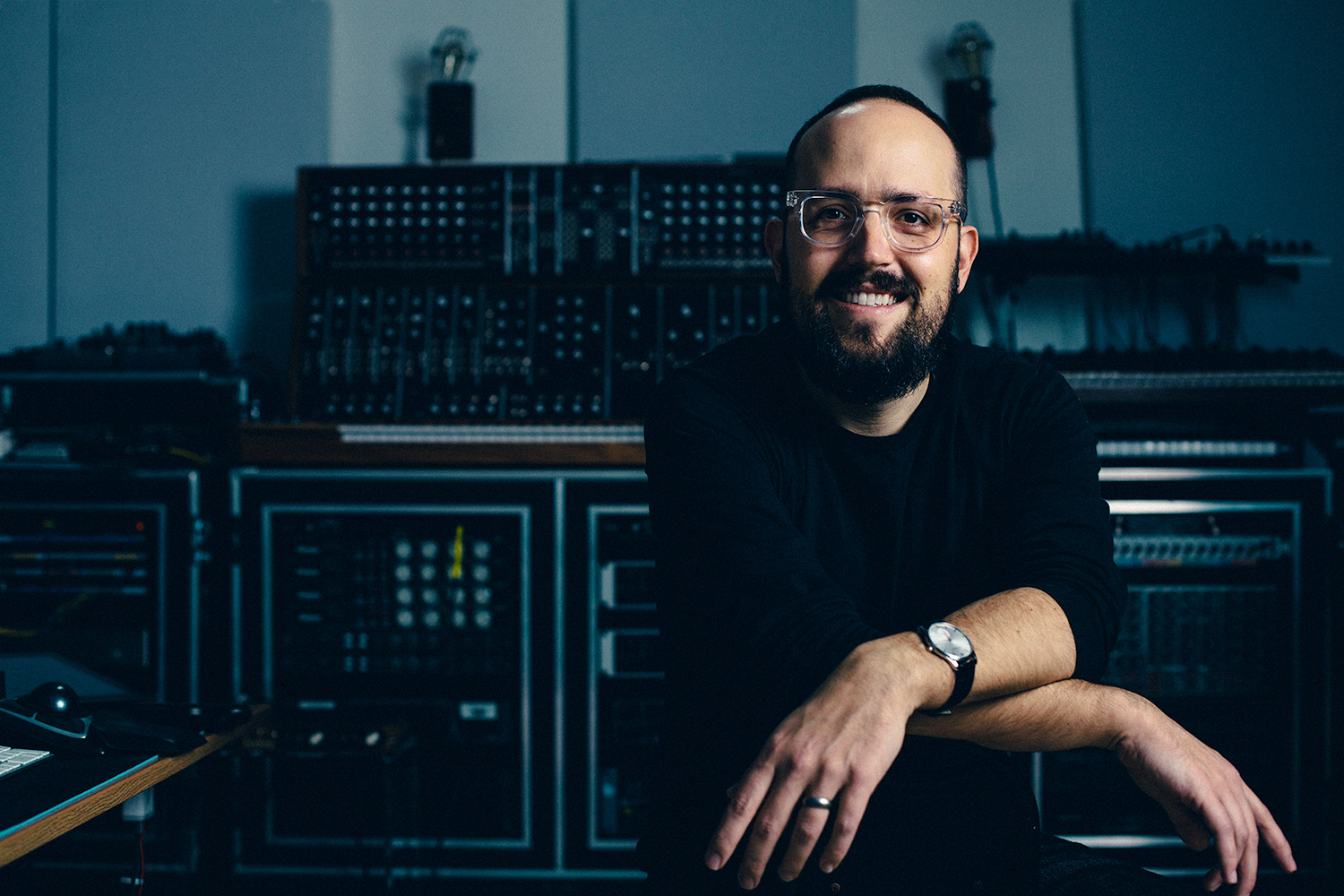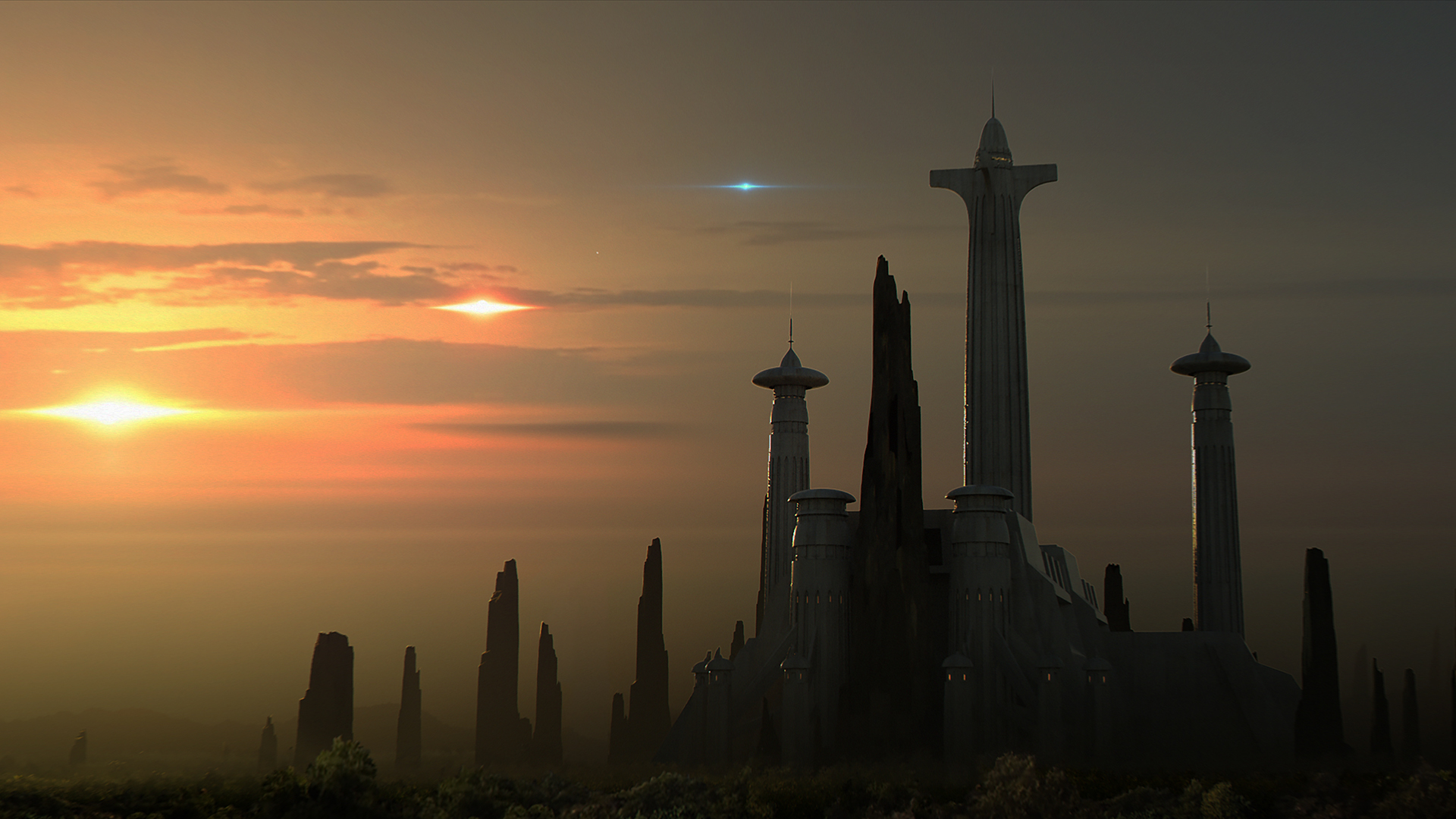ILMxLAB’s upcoming virtual reality experience, Star Wars: Tales from the Galaxy’s Edge, extends and expands the world of Batuu as players meet new characters and discover never-before-seen areas of the planet — all while starring in their own exciting adventure. For the creative team, the project offered a unique challenge: Not only did it need to capture the look and visceral feel of Star Wars, but it also needed to seamlessly blend into Star Wars: Galaxy’s Edge, the immersive lands at Disneyland and Walt Disney World Resort, where audiences were able to visit Batuu for the first time.
As with all things Star Wars, a key creative element was the score. Tales from the Galaxy’s Edge enlisted three different composers, each with their own unique styles and perspectives, to tackle different facets of the experience.

Composer Joseph Trapanese has made a career out of working on films from wildly different genres, from Tron: Legacy and Oblivion, to The Greatest Showman and Straight Outta Compton. It made him the perfect fit to score Temple of Darkness, a standalone story featured in Tales from the Galaxy’s Edge that lets players step into the boots of a Jedi Padawan in the all-new storytelling era of The High Republic. We chatted with Trapanese about musically exploring an entirely new era of Star Wars, and how he created the memorable cue “Age of Jedi.”
How long have you been composing music for virtual reality experiences?
I actually met [Skywalker Sound’s Interactive Audio Supervisor] Kevin Bolen and [fellow Tales from the Galaxy’s Edge composer] Danny Piccone on my first VR project, which was Myth: A Frozen Tale for Disney Animation. But VR technology and practice evolves so quickly that Star Wars: Tales from the Galaxy’s Edge felt like something completely new. In the time between projects, I learned a lot more about 360-degree sound and ambisonics, and made sure that our orchestral recording and mixing process would allow seamless integration of the music into the VR experience.
How does your creative process differ when you’re composing for VR, in comparison to other mediums?
Generally speaking, when working on a film, the music is placed in a single space. Even when working in [Dolby] Atmos, there is an assumed seated position and a placement of the music within a static listening stage. But with VR, we can attach music and layers of music to objects within the environment. We can also go a step further and process music using ambisonics, truly placing it in a virtual space around the listener’s head. So in general, there are even more dynamic tools and possibilities, all of which can lead to a more dramatic experience depending on how we use them.
With Tales from the Galaxy’s Edge, a prime example is how we used these tools to help establish a subtle yet effective difference between the interactive moments and the experiential moments: When the user is interacting with the environment, the music is placed ambisonically within the space; and when we are observing a story or character moment, the music is mixed more traditionally as you might experience in a film.
With Temple of Darkness, you’re creating the first piece of score for an entirely new era of Star Wars storytelling. What was it like to step into such uncharted territory?
Equal parts thrilling and intimidating! It’s impossible to ignore the great work of not only John Williams, but also Michael Giacchino, John Powell, Gordy Haab, Ludwig Göransson, and more — so many great composers have blessed the Star Wars mythology with beautiful themes and scores. But regardless of what came before, I have my own musical voice, and it was extremely important to follow my instincts and strengths to create a sonic and thematic experience that could only come from me. I’m thankful that the ILMxLAB team encouraged me to do just that, and supported the ideas I brought to the table based on their concepts. I’m very proud of what we were able to achieve!
What inspired the cue “Age of Jedi” in particular?
Kevin Bolen and the team at ILMxLAB were very generous with their time early on in the process, sharing scripts, concept art, and pitch decks, as well as meeting with me on the phone and virtually via secure video conference. On many projects, music is only thought about late in the process, but everyone on the team wanted to make music a true part of the storytelling.
My theme “Age of Jedi” was inspired by the story that Seezelslak tells about The High Republic era, when Jedi were ubiquitous, traveling great distances to protect the galaxy. It’s meant to evoke the honor, prestige, and great responsibility that these Jedi represented, and the romantic idealism of the age. Widespread use of the Force for good, tremendous technological achievements, a galaxy in harmony — in short, the glory days of the Jedi.
For me, that means this music needs grand thematic statements, a strong heartbeat, and a beautiful sheen. A mix of cutting edge electronic technology and warm organic instrumentation, but without seams or breaks: something that feels in perfect harmony and evokes adventure, beauty, and the light side of the Force.

When trying to achieve that mix of instrumentation do you usually look to traditional orchestral musicians, or something that’s based more in the digital realm?
My score is about equal parts analog and digital. There is nothing like a group of incredible musicians working together to bring life to the notes on the page, but we also have so much great technology around us, I feel strongly that my perfect score harnesses the potential of both. I’m so happy the ILMxLAB team was open to the marriage of traditional Star Warsinstrumentation to modern, bold, and unique electronic sound.
What were your biggest musical inspirations when scoring Temple of Darkness?
The stories themselves have been so inspiring, they’ve made my musical choices a bit easier than if I had to create something on a blank sheet of paper! Early on, we spoke about the need for not only the classic orchestration of vintage Star Wars, but the desire to push the sound even further using modern instrumentation and technology. So while John Williams is a clear forefather, I also drew a lot of inspiration from John Carpenter, Vangelis, Tangerine Dream, Ryuchi Sakamoto, M83, Jlin, Amon Tobin, and many more.
Are there any other insights you want to dig into about working on the project?
No, just that I can’t wait for you to experience it! We have a lot of cool stuff in the pipeline, I’m thrilled at the amount of collaboration I’ve been able to have with the entire ILMxLAB team. It’s been a super rewarding process.
Star Wars: Tales from the Galaxy’s Edge will be released on November 19th for Oculus Quest. You can follow Joseph Trapanese on Twitter, Facebook, and Instagram.

